"Kodachrome travelogue, photographed from 1935-1937, of Alexander Black's ancestral sites in Edinburgh, Scotland, and his return home to New York City, including six shots of the recently constructed Empire State Building at different times of day and night." UC Berkeley Library.
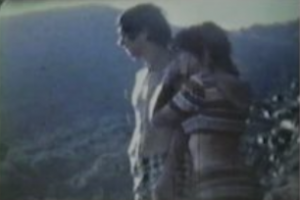
"Era una película que desarrollaba un tema muy propio de la contracultura de la época: la posibilidad de regresar a la naturaleza para vivir una vida al margen de la contaminación y de la vida moderna. Se trataba de una cinta de menos de diez minutos de duración, que contaba una historia breve pero ilustrativa de la naturaleza de los debates entre los jóvenes mexicanos cercanos a la contracultura. [...] La historia de Sergio García hacía una crítica al escapismo hippie, esperanzado por la posibilidad de crear un mundo alterno al de la realidad del capitalismo industrial" (Vázquez Mantecón, 2012).
"It was a film that developed a topic very related to the counterculture of the time: the possibility of going back to nature to live a life away from pollution and the modern life. The film lasted less than 10 minutes, and it told a brief but illustrative story about the nature of the debates between the Mexican youth that was close to the counterculture. [...] The story by Sergio García was a critique of the hippie escapism, hopeful for the possibility of creating an alternate world to the reality of industrial capitalism" (Vázquez Mantecón, 2012).
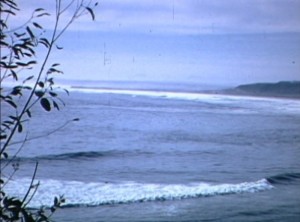
Travelogue that visits tourist destinations across several countries in South America.
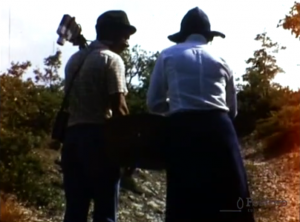
El filme comienza con una mujer lavando sus manos y arreglando su cabello, después pone plantas en una canasta y camina felizmente por un sendero en el que recoge algunas flores. Un hombre (el cineasta) prepara su cámara en medio del campo, cuando de repente ve a la mujer y empieza a filmarla a la distancia. Después de varias tomas, el hombre se acerca a la mujer y habla con ella, para después irse juntos a un lugar más poblado. Cuando el cineasta deja su cámara y equipo en una banca, un grupo de gente sale de un edificio para perseguirlo con palos y horcas.
The film begins with a woman washing her hands and fixing her hair, she then takes some plants and a basket and walks happily through a path where she picks up some flowers. A man (the filmmaker) in the middle of the countryside is preparing his camera, when suddenly he sees the woman and starts making shots from a distance. After several shots the man approaches the woman talks to her and they leave together towards a more populated place. While the filmmaker leaves his camera and equipment on a bench, a group of people step out of a building to chase him with sticks and pitchforks.
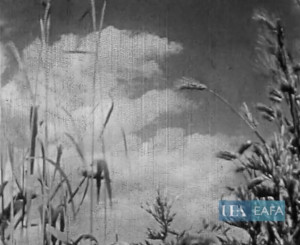
"Eastman Kodak Company prize for the finest example of photography in any out-of-door picture whether it wins a cash prize or not was awarded to Tatsuichi Okamoto, Maysuyama, Japan, for 'Early Summer,' 1 reel. This is a different subject than the one which won him second prize." American Cinematographer, Jan. 1933, 25.
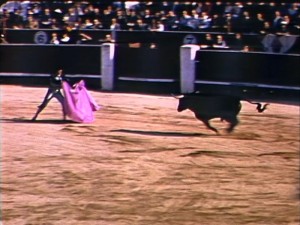
"General scenes in Spain, including farming and city life. There is a long section of a bull fight (Madrid)." UC San Diego Library.
"Another form of humor is delightfully explored in The Farmer's Daughter, by Clarence Aldrich, ACL, a burlesque of the girl-hero-villain triangle. The chase sequence, without which no such film is ever complete, is beautifully handled with many a touch reminiscent of the Keystone days. The villain is properly villainous and libidinous, while the heroine is far more ingenuous than most of your friends are likely to be" Movie Makers, Dec. 1947, 506.
Hortobagy is a strange title, but only because the film comes from Hungary. Szilagyi Attila of Hungary shows us the plains of his country and the life of the Hungarian Cowboy and the Hungarian Sheepherders. The film is in black-and-white and is a very interesting 16 minutes about people, costumes, and a land that very few of us have an opportunity to see. The filming is well done and the sound track is in Hungarian," PSA Journal, Mar. 1970, 43.
"'Japan and Its People,' Dr. Roy Gerstenkorn's educational class winner, was a pictured visit to the homes and temples of Japan. Ignoring the cities in his search for the story of the Japan that is not known to the average visitor the doctor penetrated the towns and smaller communities. His picture was awarded a high rating on its photography as well as on his treatment of the subject. After the showing of this picture before the Los Angeles Motion Picture Forum last summer the local school authorities requested and received permission from the doctor to make a duplicate of it for school purposes." American Cinematographer, Jan. 1938, 27-28.
Total Pages: 4